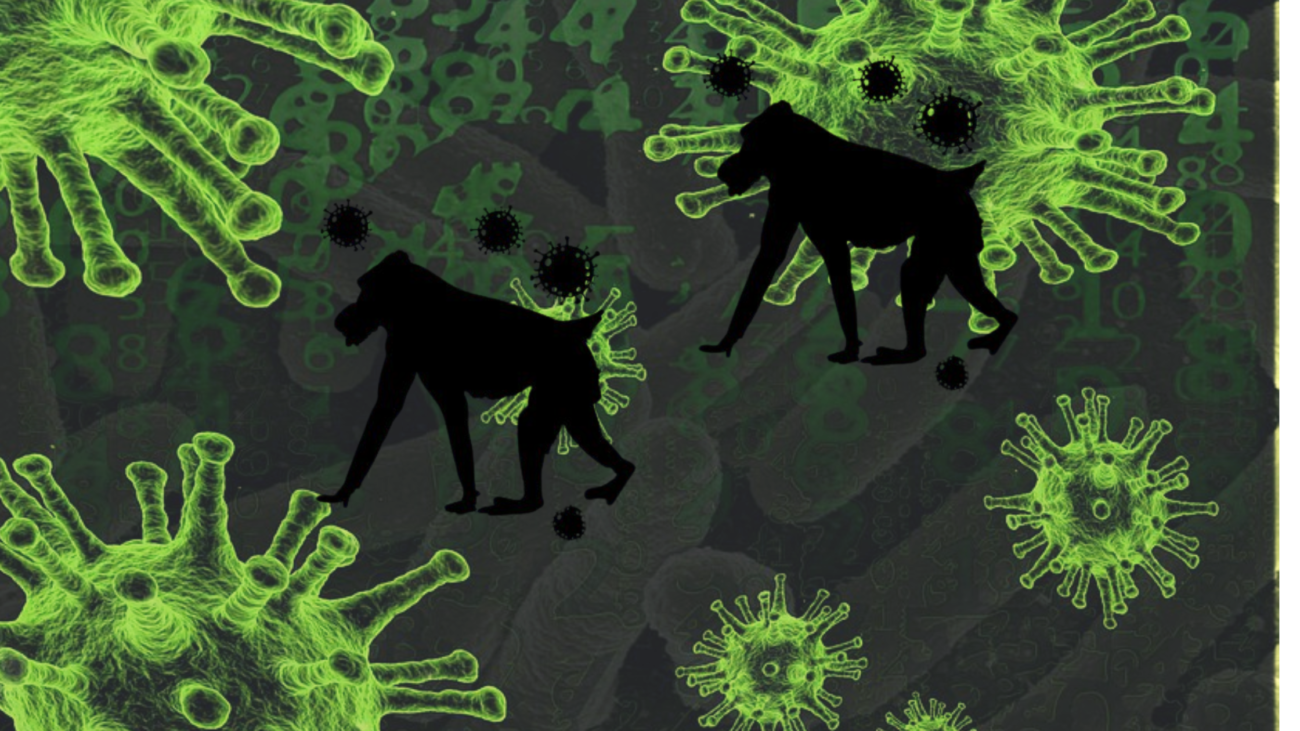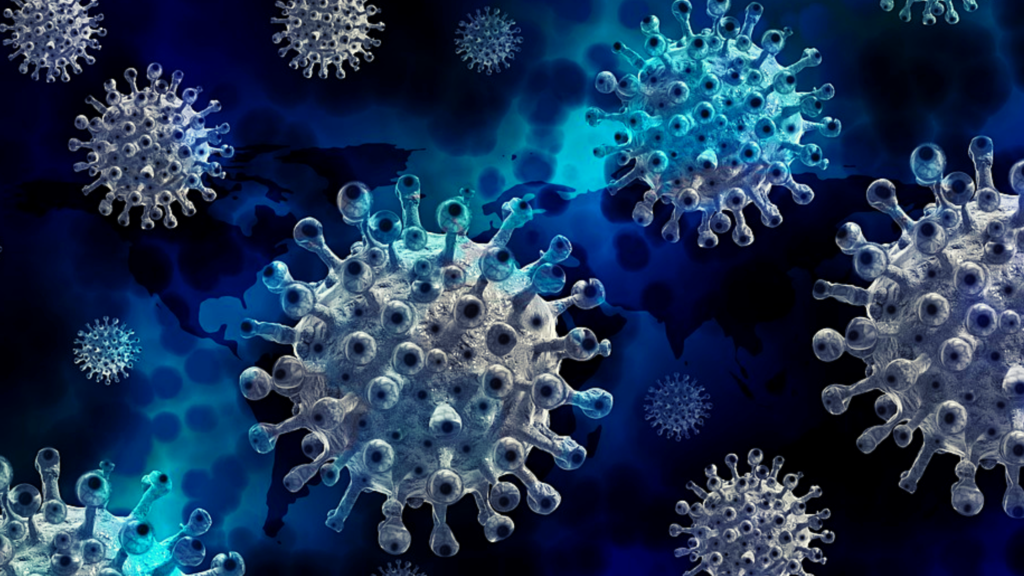Many researchers believe that this choice ought to have been made a month ago when the WHO first gave it some thought. With more than 16,000 confirmed cases so far this year, the illness is swiftly spreading over the world (see Monkeypox has become a global health emergency, says WHO).
According to Sagan Friant, an anthropologist at Pennsylvania State University in the United States, “it was initially identified in monkeys in a laboratory environment in Denmark. It does infect monkeys, and it has been isolated from monkeys, but they’re not the major reservoir for the illness.”
In our minds, a reservoir is an animal that may spread the disease but does not experience its effects or pass away.
What is monkeypox?
The monkeypox virus was initially identified at the end of the 1950s, but there are indications that it has changed in the last three to four years, making it easier for humans to contract the disease.
The World Health Organization has now issued the most serious warning it has ever issued on the spread of monkeypox, designating it a “public health emergency of worldwide concern,” similar to what it did with COVID-19 in 2020.
Signs and Symptoms of Monkeypox
Monkeypox takes a long time to establish. That indicates that after being exposed to the virus, sickness might develop in four to 21 days. The symptoms begin with a widespread, all-over sense of being sick. Monkeypox symptoms may include:
- Flu-like symptoms include fever, headache, and muscle pains
- Lymph nodes swollen
- Chills
- Exhaustion
- Symptoms of respiratory disease (e.g., sore throat, nasal congestion, or cough)
- Monkeypox can start on the face, hands, feet, and mouth and extend across the body, or it can be sexually transmitted and start in the genital or anal areas.
- Before healing, the rash will go through numerous phases, including scabs.
- The rash, which may resemble pimples or blisters, may be unpleasant or uncomfortable.
- Monkeypox symptoms often appear within three weeks of viral contact. When someone has flu-like symptoms, they generally acquire a rash within 1-4 days.
- The rash fades within a week or two, and recuperation continues. Monkeypox typically lasts two to four weeks.
How to protect yourself from Monkeypox
- To avoid monkeypox, take the following precautions:
- Avoid close skin-to-skin contact with patients who have a monkeypox-like rash.
- Avoid touching the rash or scabs of a monkeypox patient.
- Avoid kissing, hugging, cuddling, or having intercourse with someone who has monkeypox.
- Avoid contact with things and materials used by a person infected with monkeypox.
- Do not share utensils or drinks with someone who has a monkeypox.
- Avoid handling or touching a person with monkeypox bedding, towels, or clothing.
- Wash your hands often with soap and water or an alcohol-based hand sanitizer, especially before eating, touching your face, or using the restroom.
Pre-exposure to the Monkeypox
Prior to coming into contact with monkeypox, the vaccination may be suggested to those who are most at risk. This comprises:
a Gay, bisexual, and other males who have several partners, or who have had a bacterial STI within the previous year, such as chlamydia, gonorrhoea, or syphilis
b A single dose of the vaccination should be administered as soon as practicable in high-risk environments where they could treat a patient with monkeypox. And for those at risk of continuing exposure to monkeypox, a second dosage may be given at least 28 days following the first.
c More so, if you work in an environment in which you regularly come into contact with people who are more vulnerable to monkeypox, you could be asked to get vaccinated.
Post-exposure to Monkeypox
a The immunisation may be given to you if you have had extended contact with someone who has monkeypox. Here, healthcare professionals and those who have contact sexually are included.
b If the immunisation is given within four days of the exposure date, it will function optimally. It may be given up to 14 days after exposure if there is a high risk of subsequent exposure or a more serious disease.
c Even while it could minimise your symptoms, the illness might still progress. You’ll receive one dose of the immunisation. And you will be made aware if you need to take any more doses.
Conclusion
People who live in monkeypox-endemic areas can protect themselves by avoiding contact with monkeys and rats. When handling ill animals, individuals should use protective clothing, such as gloves, and the meat should be fully cooked before ingestion.
People should avoid contact with infected people and cover their skin and faces when caring for the sick to limit their chance of contracting monkeypox through human-to-human transmission.
Finally, as indicated above, appropriate practices in engaging with animals and infected individuals can lower the probability of crossover situations.
Question & Answer (Q&A)
Is there any treatment for Monkeypox?
There is currently no medication authorised specifically for infections caused by the monkeypox virus. However, some antivirals created for patients with smallpox might be useful in treating monkeypox.
Antiviral drugs might be useful even though they haven’t been studied as a monkeypox cure. Numerous investigational antivirals with anti-monkeypox activity are available, but they can only be acquired through research.
How is Monkeypox transmitted?
Monkeypox can be transmitted by infected wild animals. This can happen if you are bitten or if you come into contact with the animal’s blood, fluids, spots, blisters, or scabs.
Monkeypox can also be spread by consuming raw or undercooked meat from an infected animal.
Contact with body fluids, blisters or scabs, or being near enough to breathe in big airborne droplets can all result in transmission. According to the CDC, these droplets can’t move more than a metre. Touching monkeypox-infected clothes, beds, or towels may potentially pose a danger.
How is Monkeypox diagnosis performed?
Monkeypox should be distinguished from other rash disorders such as chickenpox, bacterial skin infections, smallpox (even though it has been eliminated), syphilis, measles, scabies, and medication-related allergic responses.
To definitively identify Monkeypox, certain tests are necessary. Therefore, when a doctor suspects the virus, he will submit lesion samples to a particular lab.
What is the disease’s level of risk?
Monkeypox is often minor, with most patients healing in a few weeks if not treated. The principal strains of monkeypox are the Congo strain and the West African strain.
Due to the current epidemic, virus sequencing data is restricted; nonetheless, only the West African strain has been detected.
In addition, the published mortality rates only correspond to the proportion of fatalities among those who have been verified to be infected, known as the case fatality ratio. However, because many cases of infections with mild symptoms go unreported, the infection fatality ratio—the proportion of fatalities among all individuals sick-can be significantly lower.
According to the WHO, children with monkeypox are more vulnerable than adults to becoming seriously ill. Infection during pregnancy can potentially cause difficulties, including stillbirth.



